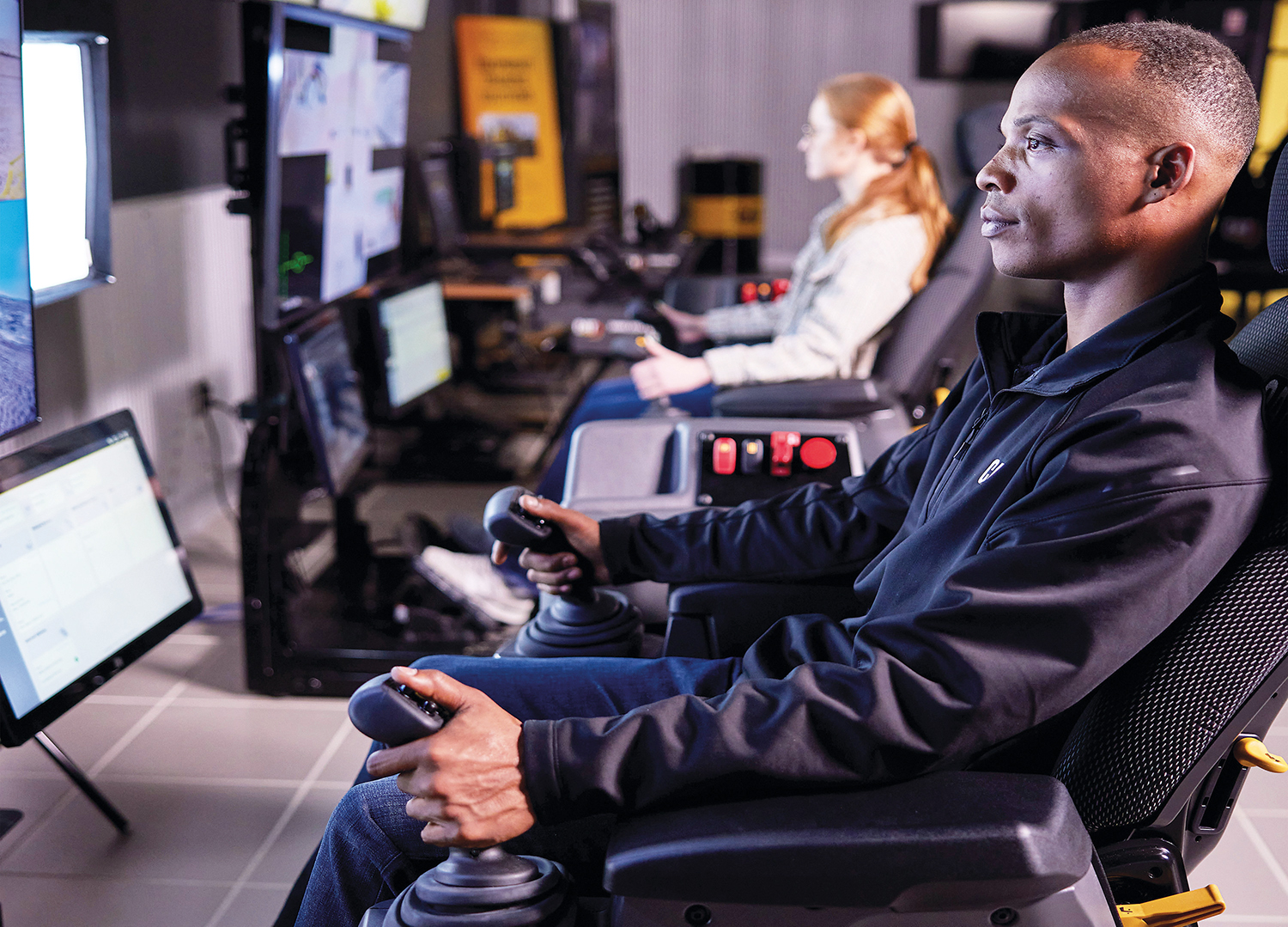The construction equipment sector is rapidly evolving towards machine autonomy, enhancing efficiency and promoting sustainability. As Peter Haddock explores, innovations from cab-less excavators to autonomous dump truck fleets are driving a greener, more efficient industry.
Remote Control Earthmoving with Caterpillar
Cat Command Station
Caterpillar, the world’s largest construction equipment manufacturer, has introduced the Cat Command Station, revolutionizing remote control operations. This system allows operators to control an entire earthmoving fleet from the comfort of an office, either onsite or globally. The ‘virtual cab’ offers familiar controls and machine displays, ensuring a seamless transition from traditional operations.
Benefits of Remote Control
The Cat Command Station provides numerous health and wellbeing benefits by enabling operators to work in a comfortable, seated environment. This non-line of sight technology fosters a collaborative workspace where multiple operators can work side by side.
Advanced Onboard Technology
Caterpillar’s machines come equipped with cutting-edge technology:
- 3D Machine Control: Ensures accurate positioning based on 3D design models and GPS systems.
- E-Fence Safety Systems: Automatically stops excavator motion within a predefined area, enhancing safety.
Industry Adoption
Major UK contractors, including Balfour Beatty, are already integrating this technology. Sean Scarah, Plant and Logistics Director, emphasizes the importance of a connected site leveraging 3D machine control and autonomous equipment to achieve net-zero goals.
Learn More: Why Mini Excavators Are Increasing in Popularity and Who’s Buying Them
Develon’s Cab-less Excavators and Dozers
Concept-X2 Platform
Develon, formerly Doosan, has introduced the Concept-X2 platform, featuring cab-less excavators and dozers. These machines are controlled remotely, combining machine-control technology with artificial intelligence to achieve full autonomy.
Autonomous Operation
Stephane Dieu, Product Specialist at Develon, highlights that the Concept-X2 platform enables autonomous operations, particularly in inaccessible or high-risk areas. The control centre performs onsite analysis and vehicle control, optimizing productivity through 3D scanning and efficient work planning.
Site Monitoring and Maintenance
Specialist sensors and cameras continuously monitor the job site and machine performance, reporting health data to predict the remaining life of key parts, ensuring timely maintenance.
Retrofitting Older Equipment: Moog Construction’s Approach
Autonomous Skid-Steer Loaders
Moog Construction, a newcomer specializing in motion control, has developed a method to retrofit autonomous technology onto older skid-steer loaders. This solution includes processors, sensors like LiDAR, GPS, ultrasonic sensors, and cameras, linked to a controller area network (CAN bus).
Remote Operations and Scalability
Moog’s system connects to a remote operations centre via cloud software, offering accuracy through local base station links. The project’s 3D model is uploaded remotely, with real-time updates provided by LiDAR data capture.
Practical Applications
Moog’s modular solution is ideal for monotonous or hazardous tasks. Trials in commercial solar farms have shown a significant reduction in breakages, demonstrating the practicality of retrofitting older equipment for autonomous operations.
Autonomous Dump Truck Fleets: Bell Equipment’s Innovation
Autonomous ADTs
Bell Equipment has spent four years developing autonomous technology for articulated dump trucks (ADTs), now in the adoption stage with a UK client. The initial implementation involves autonomous systems on two B30E trucks for quarry applications, aiming to enhance safety and efficiency.
Flexible Systems
Bell collaborates with autonomous service providers Xtonomy (Europe) and Pronto AI (US). Xtonomy’s radar-based systems offer continuous site and object mapping, suitable for multiple load and dump sites. These systems are easily integrated with existing equipment, providing flexibility in operation.
Interchangeable Operations
Brad Castle, Bell Equipment Product Manager, highlights the flexibility of their systems. ADTs can switch between manual, remote, or autonomous operations, with sensory and control systems easily removable for redeployment.
Conclusion
The construction equipment sector is at the forefront of technological innovation, driving efficiency and sustainability through autonomous machinery. From remote-controlled earthmoving to retrofitting older equipment, these advancements are transforming the industry, setting new standards for safety and productivity.

